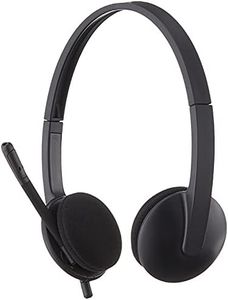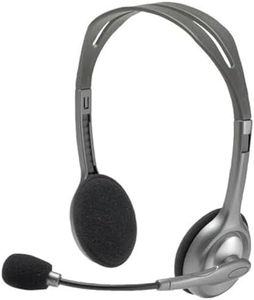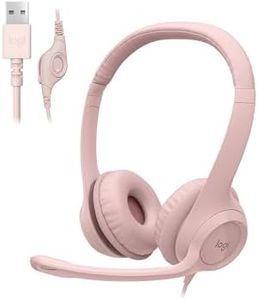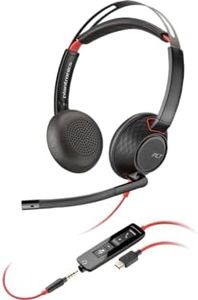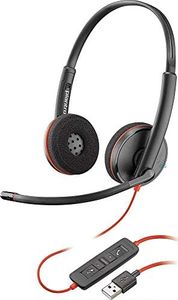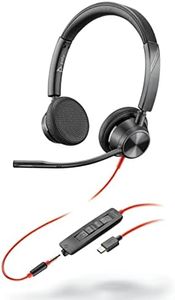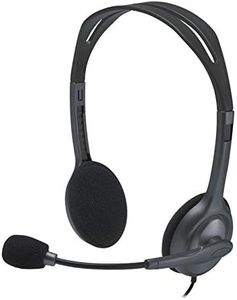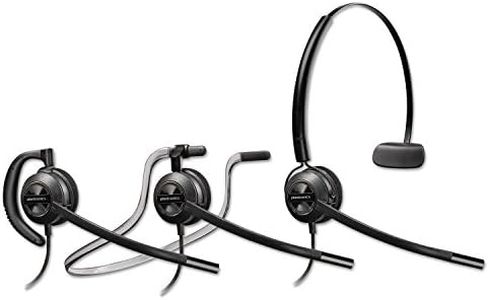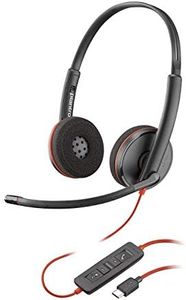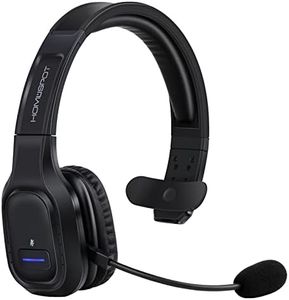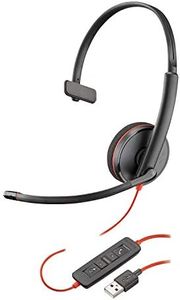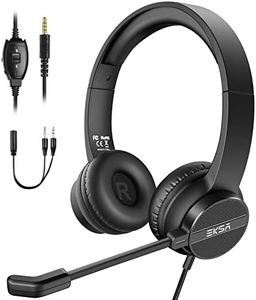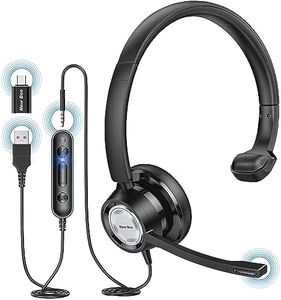We Use CookiesWe use cookies to enhance the security, performance,
functionality and for analytical and promotional activities. By continuing to browse this site you
are agreeing to our privacy policy
10 Best Call Center Headsets
From leading brands and best sellers available on the web.Buying Guide for the Best Call Center Headsets
Choosing the right call-center headset is about ensuring comfort, clarity, and reliability during long hours of communication. Since a headset becomes almost an extension of yourself during work, it's important to find one that fits well, delivers clear sound, blocks distractions, and supports how you work. The right headset will increase productivity and reduce fatigue, so focus on your personal usage needs, your environment, and your preferred wearing style.Wearing StyleWearing style refers to how the headset sits on your head and ears. Options include over-the-head (either dual-ear or single-ear), on-ear, and behind-the-neck. Dual-ear models help you focus by covering both ears, making them good for noisy spaces, while single-ear styles let you stay aware of your surroundings. Comfort is key for long shifts; if you wear a headset all day, try adjustable cushions and lighter designs. Choose the style that matches your comfort preference and workspace noise levels.
Microphone Quality and Noise CancellationMicrophone quality determines how clearly you are heard, and noise-cancelling microphones use technology to filter out background noise so only your voice comes through. This is especially important in busy offices. Some microphones are adjustable to sit closer to your mouth for better sound. If you work in a quiet space, basic microphones might be fine, but for shared or noisy environments, strong noise cancellation will make calls clearer for everyone.
Connectivity (Wired vs. Wireless)Connectivity describes whether your headset connects with a wire or uses wireless technology like Bluetooth. Wired headsets typically offer better dependability and no charging but limit movement. Wireless models give you freedom to move around, helpful if you need to grab files or move between desks, but must be recharged and may sometimes have signal drops. Pick wired if you are always at your workstation and value consistency, or wireless if mobility during your shift is important.
Audio QualityAudio quality includes both how your voice sounds to others and how well you can hear callers. Better speakers provide clearer, more natural sound, reducing strain and misunderstandings. Levels of quality can range from basic mono sound to advanced stereo with HD voice. For standard calls, basic clarity might be enough, but if you deal with a lot of customer interaction or need to pick up every word, prioritize headsets known for high-quality sound.
Durability and BuildDurability covers how well the headset stands up to daily wear and tear. Look for sturdy materials, strong headbands, and reinforced cables for wired models. Lightweight headsets are more comfortable but should not feel flimsy. If your headset will be shared or used intensively, toughness is important. For individual or lighter use, less rugged models may be acceptable.
CompatibilityCompatibility means whether the headset works with your devices and call-center systems—like computers, desk phones, or softphone applications. Some headsets use USB connections, others use 3.5mm jacks, and some connect via Bluetooth. Make sure the headset matches the devices and platforms you work with, as not all headsets suit all setups. Always check for compatibility with your specific work environment before buying.
Comfort and AdjustabilityComfort and adjustability refer to the overall wearability of the headset during long shifts. Features like padded earcups, adjustable headbands, and swiveling microphones all contribute. If you wear the headset for hours, lighter and well-padded models prevent discomfort and headaches. Try to choose a headset with enough adjustment options to fit your personal shape and style best.

